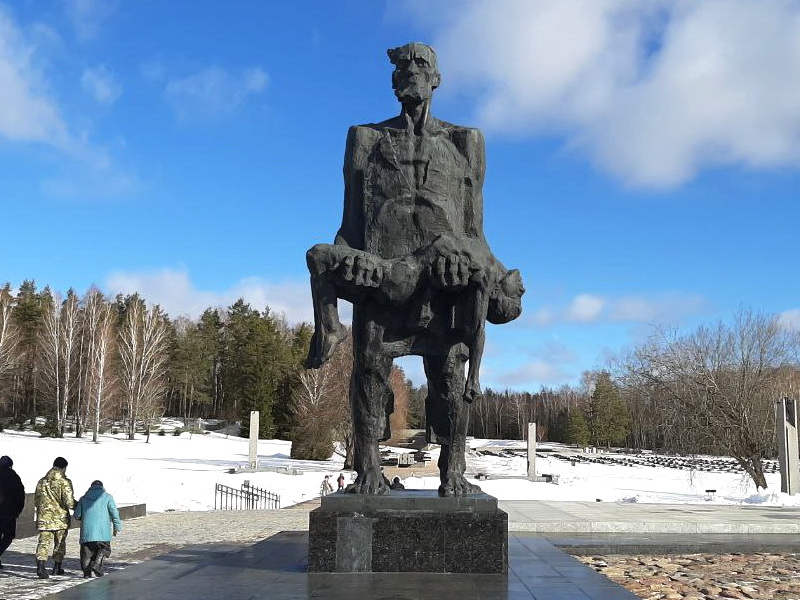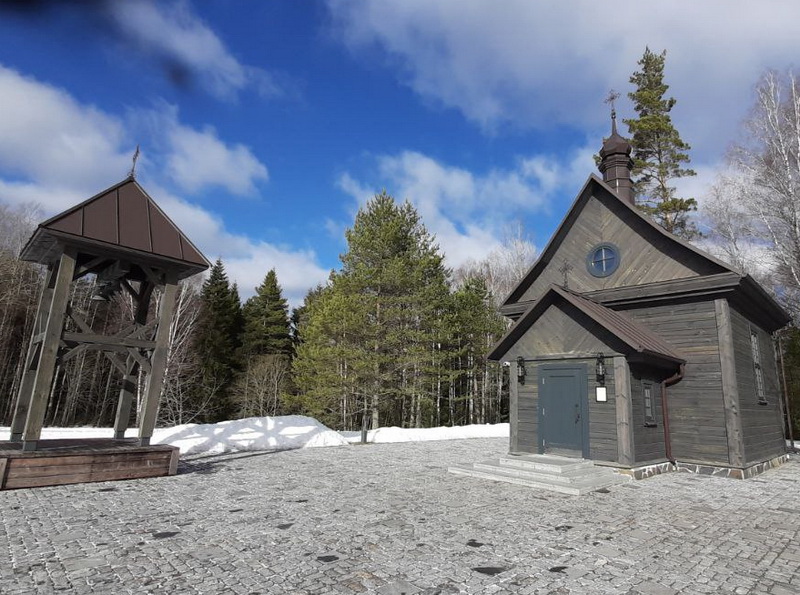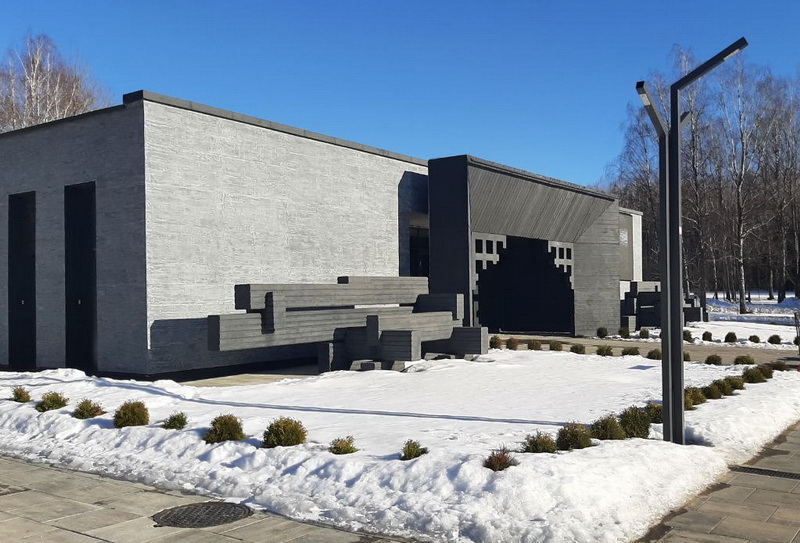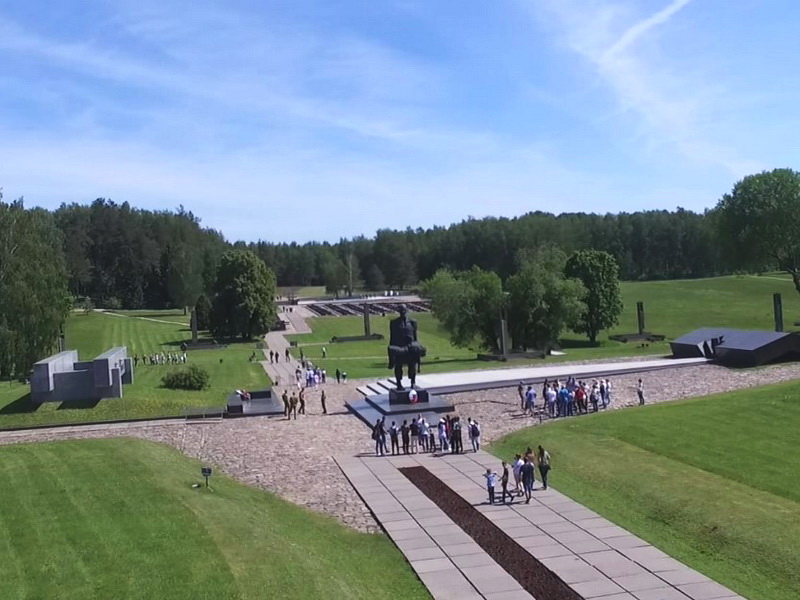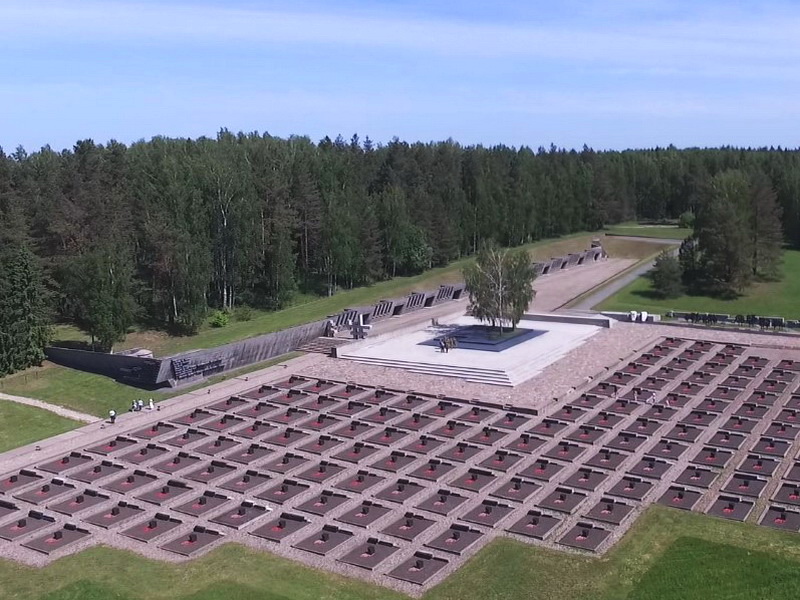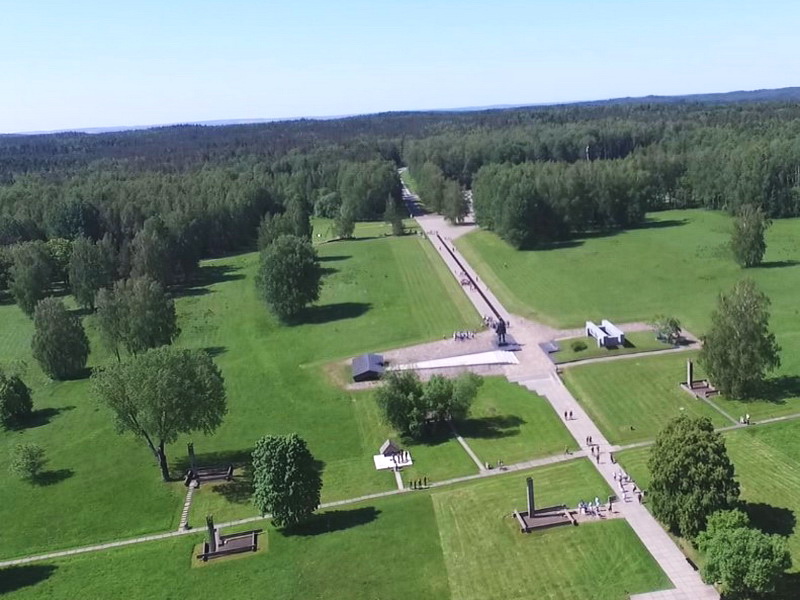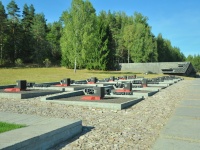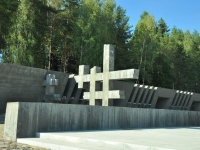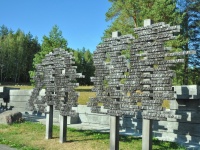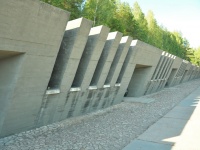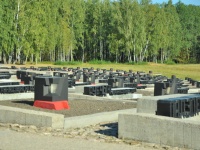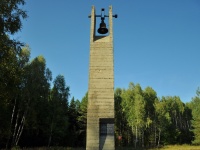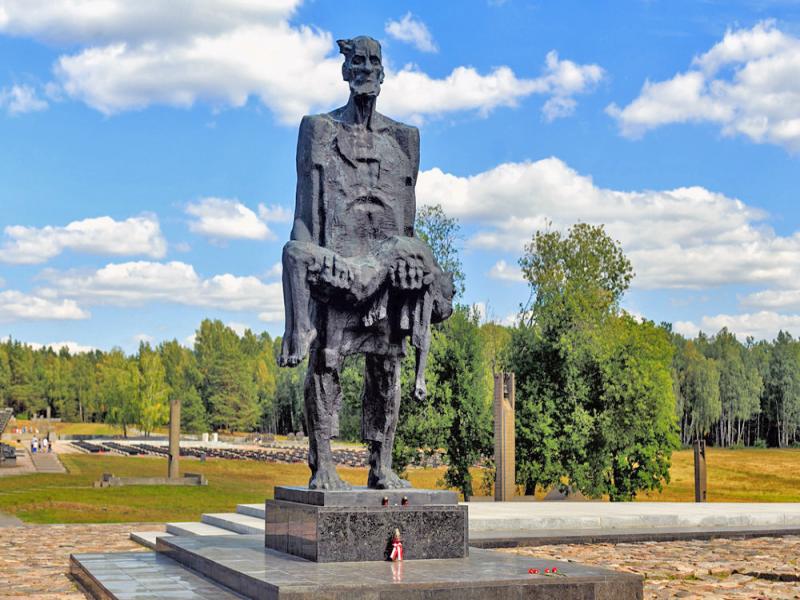The whole country helped to build the memorial. Granite was brought from the quarries of Ukraine, white marble from Russia. The grand opening of thememorial complex «Khatyn»took place onJuly 5, 1969.
The complex covers an area of about 50 hectares. In the center of the memorial composition is a six-meter bronze sculpture «The Unconquered Man»with a dead child in his arms. Nearby are closed granite slabs, symbolizing the roof of the barn in which the villagers were burned. On the white marble mass grave there is a Crown of Memory. On it is the order of the dead alive:
«Good people, remember: We loved life, and our Motherland, and you, dear ones. We burned alive in the fire. Our request to everyone: let grief and sadness turn into your courage and strength, so that you can establish peace and tranquility on earth forever. So that from now on, nowhere and never will life die in a whirlwind of fires!»
On the reverse side of the Crown of Memory is the answer of the living to the dead:
«You are our relatives. With our heads bowed in great sorrow, we stand before you. You did not submit to the fascist murderers in the dark days of hard times. You accepted death, but the flame of your love for our Soviet Motherland will never go out. The memory of you among the people is immortal, just as the earth is eternal and the ever-bright sun above it!»
The former village street is lined with gray reinforced concrete slabs, the color of ash. In those places where houses once stood, 26 symbolic concrete lower crowns of log houses and the same number of obelisks, reminiscent of chimneys scorched by fire, were placed. An open gate was installed in front of each of the burned houses, as a symbol of the hospitality of the village residents. On the chimney-obelisks there are bronze plaques with the names of those who were born and lived here. On top of each obelisk is a sad ringing bell. The bells ring simultaneously every 30 seconds.
On the territory of the complex there is the world’s only Village Cemetery — 185 graves, each of which symbolizes one of the unrevived Belarusian villages that were burned along with the population. The grave of each village is a symbolic ashes, in the center of which there is a pedestal in the form of a tongue of flame — a symbol that the village was burned. The funeral urn contains the soil of the village. The name of the village and the name of the district in which the village stood are written on the grave.
Another memorial element of the complex is the «symbolic trees of life», on the branches of which the names of 433 Belarusian villages are listed in alphabetical order, which were destroyed by the Nazis along with their inhabitants, but were restored after war.
The memorial element «Wall of Memory» includes memorial plaques with the names of over 260 death camps and places of mass extermination on the territory of Belarus.
On the territory of the memorial there is also the Eternal Flame. On the square mourning pedestal there are three birch trees in three corners. Instead of the fourth, an eternal flame burns - in memory of every fourth resident of Belarus who died.
Memorial Complex «Khatyn» is included in the state list of historical and cultural heritage.
The Khatyn tragedy occurred on March 22, 1943. In the morning, 6 km from Khatyn, partisans fired at a fascist convoy and as a result of the attack, a German officer was killed. The brutal fascists burst into the village of Khatyn and surrounded it. The entire population – old people, women, children — was kicked out of their homes and driven into the collective farm barn. The butts of machine guns were used to lift the sick and old people out of bed; they did not spare women with small and infant children. The only adult witness to the Khatyn tragedy, 56-year-old village blacksmith Joseph Kaminsky, burned and wounded, regained consciousness late at night, when the Nazis were no longer in the village. He had to endure another severe blow: among the corpses of his fellow villagers, he found his wounded son. The boy was fatally wounded in the stomach and received severe burns. He died in his father's arms. This tragic moment in the life of Joseph Kaminsky forms the basis for the creation of the only sculpture of the memorial complex «Khatyn» — «The Unconquered Man».
The State Memorial Complex «Khatyn» is open to visitors around the clock. The photo-documentary exhibition is open from 10.00 to 16.30. Closed on Monday.
